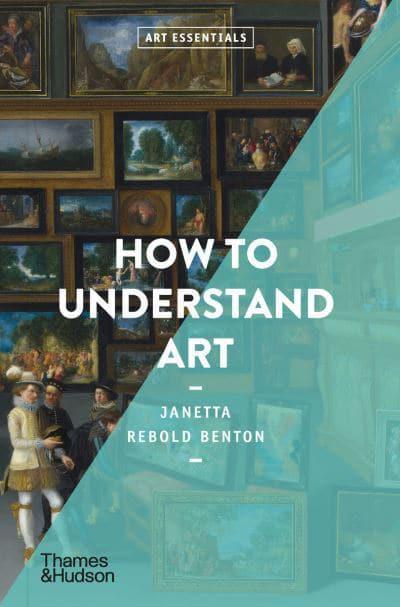

How To Understand Art
Janetta Rebold Benton, PhD
Distinguished Professor, Art History

What is the central theme of your book?
Called How to Understand Art, the goal is to help the reader to do just that. The publisher describes the book as “A clear and concise overview of the fundamentals shared by visual arts across the globe, enabling the reader to think carefully, inquisitively, and critically about art.” The British artist and author known as Bob and Roberta Smith writes, “Janetta Rebold Benton’s joyous, authoritative, and sometimes startling book is your new deep dive into visual art.”
What inspired you to write this book?
It is the result of years of teaching my University students, museum lectures, and subscription lectures for the Metropolitan Museum of Art, Smithsonian Institution, and elsewhere.
Why is this book important in your field? What does it contribute to the current body of knowledge on this topic?
This book offers a compact, concise, easy to understand, current overview of all the tools one needs to understand art.
Were students involved in any research related to your book? If so, please explain and name the student(s).
The reactions of students to this information and our class discussions helped me to select the most interesting/important information and present it clearly.
Tell me about a particularly special moment in writing this book.
This is when I learned that publishers in other countries would translate and publish my book. There are editions in both American and British English (Thames & Hudson, London), French (Flammarion, Paris), Italian (24 Ore Cultura, Milan), German (Midas Verlag, Zurich), Latvian (Jāna Rozes apgāds, Riga), and Spanish (Art Blume, Barcelona).
What is the one thing you hope readers take away from your book?
I hope they will become more comfortable with, and more curious about, unfamiliar works of art created in all media, throughout the world, and in all eras.
Is there anything else you would like to share about your book?
I signed another contract with the publisher, Thames & Hudson, to write a second book for their Art Essentials series, called The History of Western Art. It will be my 10th art history book.
What other books have you published?
Arts and Culture: An Introduction to the Humanities, co-authored with Robert DiYanni, Pearson/Prentice Hall, Upper Saddle River, NJ, fifth edition, forthcoming; fourth edition, 2012 (vol. I, 540 pages, 294 illustrations; vol. II, 498 pages, 289 illustrations; combined vol., 670 pages, 537 illustrations); Chinese translation, fourth edition, Tsinghua University Press, Beijing, 2020, forthcoming; Chinese translation, second edition, 2011.
Handbook for the Humanities, co-authored with Robert DiYanni, Pearson, Upper Saddle River, NJ, 2014 (450 pages, 443 illustrations, published in paperback and as e-book), Chinese translations, 2016, 2019.
Materials, Methods, and Masterpieces of Medieval Art, Praeger Series on the Middle Ages, Praeger Publishers Imprint Publication, Greenwood Publishing Group, ABC-CLIO, Santa Barbara, CA, 2009 (306 pages, 73 illustrations, published in hard cover and as an e-book).
Medieval Mischief: Wit and Humour in the Art of the Middle Ages, The History Press (Sutton Publishing Ltd.), Thrupp, Gloucestershire, 2004 (176 pages, 165 illustrations).
Art of the Middle Ages, World of Art series, Thames & Hudson Ltd., London, and New York, 2002 (320 pages, 250 illustrations).
Holy Terrors: Gargoyles on Medieval Buildings, Abbeville Press, New York, 1997, fifth printing; French edition, Saintes Terreurs: les gargouilles dans l'architecture médiévale, Éditions Abbeville, Paris, 1997, second edition, 2000 (140 pages, 108 illustrations).
Medieval Monsters: Dragons and Fantastic Creatures, exhibition catalog, Katonah Museum of Art, Katonah, NY, 1995 (39 pages, 94 illustrations).
The Medieval Menagerie: Animals in the Art of the Middle Ages, Abbeville Press, New York, 1992 (Book of the Month Club selection); French edition, Bestiaire Médiéval: les animaux dans l'art du moyen age, Éditions Abbeville, Paris, 1992 (191 pages, 151 illustrations).
This book offers a compact, concise, easy to understand, current overview of all the tools one needs to understand art.
Fun Facts
When did you join Dyson?
September 1986, upon moving back to the US after 4+ years in Paris.
What motivates you as a teacher?
I love the students!
What do you do in your spare time; to relax/unwind?
Enjoy my adorable grandchildren. And I hope to return to traveling again post-pandemic.
What are you reading right now?
Information for my next book, The History of Western Art.